What’s the difference between Type 1 and Type 2 Diabetes1
Diabetes is a condition where the amount of sugar (glucose) in your blood is higher than normal.
Type 1 diabetes is where the pancreas in the body produces little or no insulin. Insulin is needed to help sugar enter the cells of your body. The sugar comes from the food you eat and it is used in all cells and organs to generate the energy that keeps your body going.
People with type 2 diabetes (T2D) can still produce insulin, but the cells cannot respond to the insulin properly. In other words, they are “insulin-resistant”. In the beginning, the pancreas compensates for this by making more insulin. But after some time, it gets exhausted and cannot produce enough insulin to keep the blood sugar in the healthy range.
How Can Type 2 Diabetes be Managed?
Diabetes responds well to many lifestyle changes, so there are a lot of ways to manage diabetes. Healthy habits and medication work together to bring your blood sugar levels under control.
- Food: Set up a personalized eating plan, ideally with the help of an experienced dietitian.
- Exercise: Be active in your everyday life.
- Medication: Take the medications your doctor says are necessary.
- Visiting the right person: finding the right individual can be challenging, but getting this right is crucial. A diabetic neuropathy doctor is where many patients can begin.
Type 2 Diabetes Causes and Risk Factors
The exact cause of type 2 diabetes is not fully known. Research has shown that the development of type 2 diabetes is linked to a number of risk factors.
T2D risk factors comprise:
- History of hyperglycemia, pre-diabetes, and/or gestational diabetes
- High blood pressure
- High cholesterol
- Genetics and ethnicity
- Family history
- Overweight and obesity
- Lack of exercise
- Age
Additionally, people often wonder, is heel pain a symptom of T2D? While not commonly associated, some diabetic complications can cause foot pain.

Tips for a Healthy Lifestyle
1. T2D Diet Food
The Diabetes Plate Method is an effective way to plan balanced meals, especially for those with prediabetes or diabetes. Using a nine-inch plate, divide it into three sections: half for non-starchy vegetables, a quarter for lean protein, and a quarter for grains or starchy foods. On the side, include a serving of dairy or fruit. This method helps ensure proper portion sizes and a variety of nutrients.
Useful tips:
- Diversify! Eat different kinds of foods.2
- Balance out! Eat several meals throughout the day and don't skip meals.2
- Take your pick! Vegetables, whole-grain products, fruit, fat-free dairy products, healthy fats and lean meat or fish - many foods are suitable for you.2

2. Don’t forget to Monitor what you drink!
Think about drinks, too – they can also affect your blood sugar.
Useful tips:
- Stay hydrated! Fresh water is your best choice.
- Do you like coffee or tea? If you drink them plain, they can be part of a healthy, sugar-reduced diet.
- Switch to low-sugar drinks and healthy alternatives for beverages.3
- Alcohol contains calories and sometimes sugar and may therefore influence your blood sugar level. Ask your doctor if you have any questions about how to handle alcohol.

3. The Importance of Staying Active
If you have diabetes, staying active is essential! Exercising regularly is an important way to help improve your blood glucose levels, as it can help your body cells to use insulin more effectively.4,5 Physical activity can also improve cholesterol,5 improves blood pressure5 and can lower your weight sustainably.6
If you’re looking for ideas on how to incorporate exercise into your daily life, take a look at the tips below:7
Start small: If you’re new to exercise, try making small changes that will get you moving more in your daily life. For example, try climbing the stairs instead of using the lift, walking to your local shops instead of driving, or organizing walks with friends and family. Or start running with diabetes to improve your overall fitness.
Get your heart pumping: Once you’re ready to do more, try aerobic exercises like running, cycling, and swimming. This type of activity helps control blood sugar levels and will improve your heart health.
Add strength training: If you can, try doing weight training two to three times a week. This type of activity can keep your muscles and bones strong, and your blood glucose levels under control by helping the insulin to become more effective. Additionally, consider incorporating pre-workout routines to optimize your exercise sessions and maintain energy levels.
Stay flexible: Remember to stretch before and after exercise to help prevent injury to your muscles.
Please speak to your healthcare professional before making changes to your exercise regime, to ensure you understand the impact it could have on your blood glucose levels and any necessary steps you take to stay safe and healthy. Consider a fitness assessment for type 2 diabetes before starting.

4. Smoking and Diabetes
Smoking is a significant risk factor for type 2 diabetes, increasing the likelihood of developing the condition by 30%–40% compared to non-smokers. Additionally, people with diabetes who smoke often face greater challenges in managing their condition, including difficulties with insulin dosing.
Smoking not only heightens the risk of diabetes but also contributes to diseases of the heart and blood vessels further complicating diabetes management.13
5. Type 2 Diabetes Medication
Healthy eating and physical activities are a good start for your diabetes management and may do the job on their own. However, if they are not enough to normalize your blood sugar levels, your doctor may decide that you need oral/injectable medications and/or insulin to reach this goal.
How to Monitor your Blood Sugar Levels with Type 2 Diabetes
Your blood sugar level can be measured using a “blood glucose meter” or “blood glucose monitor”. You simply take a drop of blood by pricking your finger and the meter tells you how much sugar is in your blood at that time. This way, you can check if your blood sugar level is in the healthy range.
Self-monitoring of blood glucose levels: What are the benefits?
Self-monitoring can help you understand the effect of changing your diet, physical activity and medication on your blood glucose levels.8
Self-monitoring to support glycemic management can reduce the chance of complications such as kidney, nerve and eye damage and improve quality of life.9
What is structured blood glucose testing?
Structured testing is a self-monitoring strategy where people take their own blood glucose readings at regular times throughout the week to see how their daily activities impact their blood glucose levels.10
By spotting patterns or identifying factors that cause blood glucose levels to rise or fall, it is possible to see how to adjust food, activity and medication* to help maintain stable blood glucose levels.10

Wash and dry your hands.
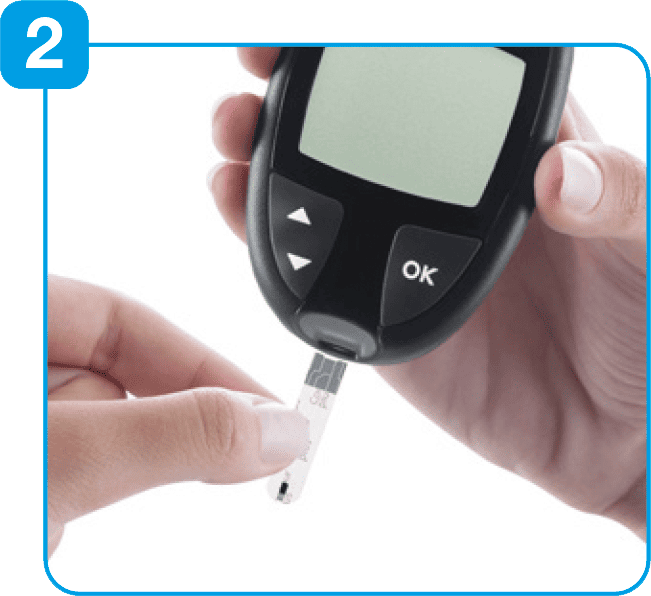
Insert the strip in the meter. This will turn the meter on.
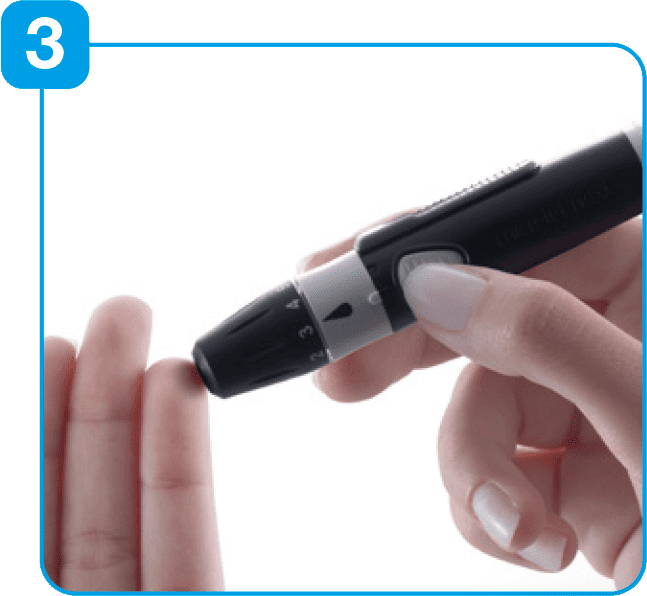
Prick your finger with the lancing device at the side of the finger.
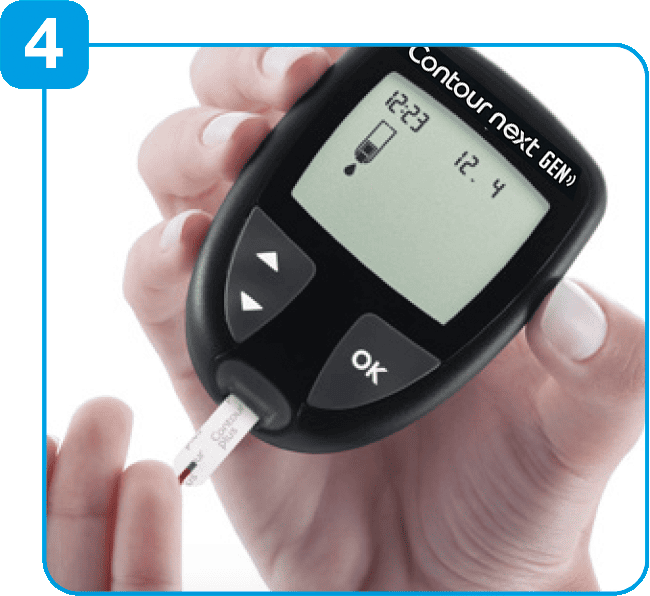
Immediately touch the tip of the test strip to the drop of blood.
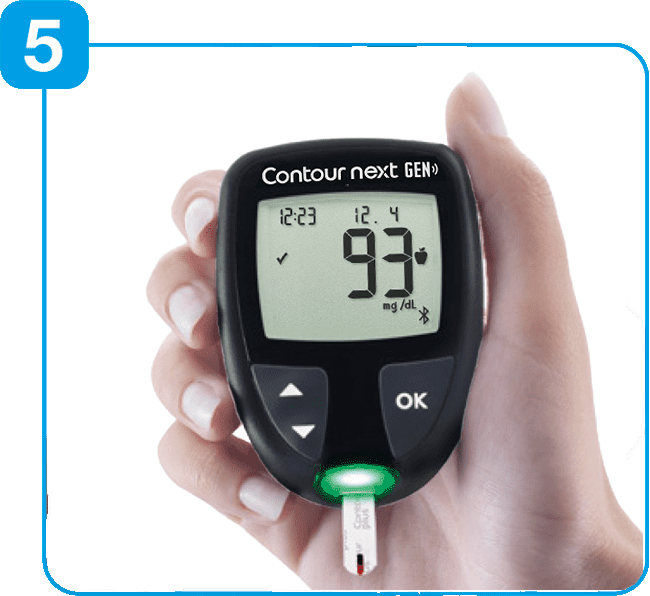
After a 5 second countdown, the meter will display your blood glucose results.
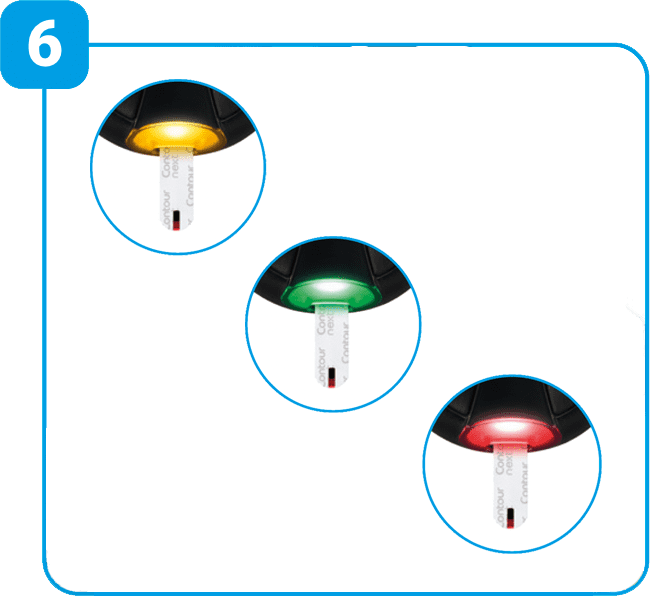
The smartLIGHT® feature offers easier understanding of blood glucose levels, showing if the blood glucose reading is above, within or below the target range.11,12
Before use please see the User Guide of your CONTOUR®NEXT GEN meter for full instructions. *As discussed with your healthcare professional.
For People with Type 2 Diabetes requiring insulin therapy
To manage diabetes successfully, the blood sugar levels should be kept within the normal range by timely injections of the right dose of insulin. However, if you change your eating habits, or physical activities, your blood sugar levels may become too low or too high. If sugar levels rise too high (hyperglycemia) and stay high, there is a risk of permanent damage to organs and other complications. If sugar levels fall too low (hypoglycemia), you may lose important functions, such as the ability to think and inability to complete routine tasks.
Ask your Healthcare Professional about your individual blood sugar target range and get advice on how to respond to hypoglycemic and hyperglycemic situations.
Ready to better manage your Type 2 diabetes? Learn more about how our products can support you!
Shop NowReferences:
- https://diabetes.org/living-with-diabetes/newly-diagnosed, Accessed May 2024
- https://diabetes.org/food-nutrition/eating-healthy, Accessed May 2024
- Jean-Philippe Drouin-Chartier et al. Changes in Consumption of Sugary Beverages and Artificially Sweetened Beverages and Subsequent Risk of Type 2 Diabetes: Results From Three Large Prospective U.S. Cohorts of Women and Men. DiabetesCare 1 December 2019; 42 (12): 2181-2189.
- Kirwan JP, del Aguila LF, Hernandes JM, et al. Regular exercise enhances insulin activation of IRS-1-associated P13K inhuman skeletal tissue. J Appl Physiol. 2000;88:797-803.
- Physical Activity/Exercise and Diabetes: A Position Statement of the American Diabetes Association. Diabetes Care 2016;39:2065-2079 lDOI:10.2337/dc16-1728.
- Wing R, The Look AHEAD Research Group. Cardiovascular Effects of Intensive Lifestyle Interventions in Type 2 Diabetes. N Engl J Med 2013;369:145-54. DOI: 10.1056/NEJMoa1212914.
- AADE7 Self-Care Behaviors® BEING ACTIVE. https://www.adces.org/docs/default-source/handouts/adces7/handout_pwd_adces7_beingactive.pdf?sfvrsn=613d6359_15, Accessed May 2024.
- American Diabetes Association. Standards of Medical Care in Diabetes - 2024. Diabetes Care. 2024;47(Supply 1).
- Huang IC et al. The Influence of Self-monitoring Blood Glucose Frequency on the Oscillation of Hemoglobin A1c and Chronic Complications. Chang Gung Med J. 2012;35(1):46–53.
- Gracia TR et al. Structured SMBG in early management of T2DM: Contributions from the St Carlos study. World J Diabetes. 2014;5(4):471–481.
- Smartson Online survey Sweden 2017. 352 respondents. People with diabetes Type 1 and Type 2, over 18 years old who tested at least 4-7 times a day. Participants received free meter and test strips.
- CONTOUR®NEXT Gen BGMS User Guide Rev 07/22.
- https://www.cdc.gov/tobacco/campaign/tips/diseases/diabetes.html. Visited August 2024.


